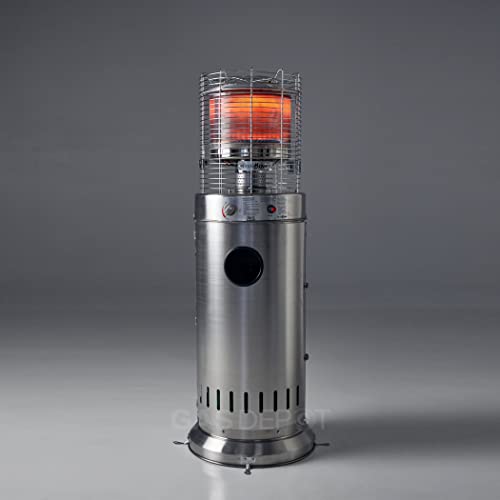10 Untrue Answers To Common Gas Patio Heaters Questions: Do You Know The Correct Answers?
The Comprehensive Guide to Gas Patio Heaters
As outdoor living ends up being increasingly popular, gas patio heaters have become an essential aspect for extending the outdoor amusing season. Whether for a relaxing evening with buddies or a vibrant household event, these heaters provide heat and convenience that can change any outdoor space. This short article checks out the different aspects of gas patio heaters, including their types, advantages, functional mechanics, upkeep ideas, and factors to consider for buying one.
What is a Gas Patio Heater?
A gas patio heater is a kind of heating appliance developed specifically for outdoor use. Usually fueled by propane or gas, these heaters produce warmth to combat the chill of the night air, allowing outdoor social activities to continue even under cooler temperatures.
Kinds Of Gas Patio Heaters
Gas patio heaters been available in a number of various styles, each matched for various needs and visual appeals. The common types consist of:
Freestanding Heaters:
- These are the most typical type and are generally tall, with a broad base and a heater aspect at the top.
- They can quickly be moved around and appropriate for different outdoor settings.
Tabletop Heaters:
- Smaller and more compact, tabletop heaters are created to rest on tables or other surface areas.
- They supply warmth for smaller sized locations and are normally easier to store.
Wall-Mounted Heaters:
- These are fixed to a wall and are a great choice for patio areas with minimal space.
- They use a more irreversible heating option and can complement outdoor decor.
Patio Fire Pits:
- While not exclusively heaters, gas fire pits provide heat and ambiance all at once.
- They can function as a focal point for outdoor gatherings.
Heater Type
Description
Best For
Freestanding
Tall, mobile units with a heating aspect on the top
Large open locations
Tabletop
Compact models perfect for table surfaces
Little gatherings
Wall-Mounted
Fixed systems offering consistent heat
Smaller sized patio areas
Patio Fire Pits
Integrated heating and ornamental function
Ambiance and heat
Benefits of Gas Patio Heaters
Purchasing a gas patio heater uses numerous advantages:
- Extended Outdoor Enjoyment: Gas heaters permit house owners to enjoy their outdoor patios even during colder months.
- Quick Heating Capability: Gas heaters heat up rapidly, offering instant remedy for the chill.
- User-Friendly Operation: Most gas heaters include easy ignition controls for ease of use.
- Visual Appeal: Many gas heaters are created to be aesthetically enticing, enhancing the overall look of your outdoor space.
- Flexible Fuel Options: Availability of both propane and gas models caters to various needs and preferences.
Functional Mechanics
Gas patio heaters operate by transforming fuel into radiant heat. Here's a simplified breakdown of how they work:
- Fuel Source: Most gas heaters use propane or gas. Fireplaces And Stoves of fuel impacts performance and schedule.
- Ignition System: Most designs include either a manual ignition (using a lighter or match) or an electronic ignition (push-button).
- Heating Element: Once ignited, gas streams through a burner, where it is combusted to create heat. Radiant heat spreads from the heating aspect.
- Heat Diffuser: Some heaters have a reflector to assist disperse heat more equally throughout a broader location.
Fuel Comparison
Fuel Type
Pros
Cons
Propane
Portable, commonly available
Needs tank replacement/refill
Gas
Economical if connected to a supply
Setup more complex
Upkeep Tips for Gas Patio Heaters
Proper care will extend the life of gas patio heaters. Here are some essential maintenance suggestions:
- Regular Cleaning: Keep the heater clean from dirt and particles. Regularly wipe down the surface areas.
- Inspect Gas Supply Lines: Check for leakages or fractures in the gas lines. Usage soapy water to discover leakages by observing bubbles.
- Seasonal Checks: Before the usage of a heater, examine all components and repair work or change any damaged parts.
- Storage: During off-seasons, keep the heater in a dry location or cover it for protection.
- Expert Servicing: Consider a professional check-up yearly, specifically for gas designs.
Considerations When Purchasing a Gas Patio Heater
When selecting a gas patio heater, keep the list below elements in mind:
- Heating Capacity:
- Measured in BTUs, a higher BTU score supplies more heat.
- Size and Weight:
- Depending on the space available and whether the heater needs to be portable.
- Material:
- Stainless steel heaters provide sturdiness and resistance to rust and deterioration.
- Design:
- Choose a design that matches your outdoor decor.
- Security Features:
- Look for automated shut-off functions or security tilt valves to prevent accidents.
Frequently asked questions
Q: Are gas patio heaters safe to use?A: Yes
, when used according to the producer's instructions and security guidelines, gas patio heaters are safe. Constantly ensure proper ventilation.
Q: How long can one propane tank last?A: A standard 20 pound
propane tank can last anywhere from 8 to 30 hours, depending upon the heat setting. Q: Can gas patio heaters be utilized indoors?A: No,
**gas patio heaters are developed for outdoor use just due to the risk of carbon monoxide gas accumulation in enclosed spaces. Q: Do gas patio heaters require assembly?A: Most freestanding models need fundamental assembly
, while tabletop and wall-mounted options may require more
specific assembly. Gas patio heaters are an attractive service for those wanting to enhance their outdoor experiences throughout the year.
By comprehending the different types, benefits, and operational mechanics, potential buyers can make informed choices that line up with their requirements. Appropriate upkeep and security considerations will guarantee that these heaters stay efficient and safe, supplying convenience to outdoor gatherings for numerous seasons to come. With mindful selection and care, a gas patio heater can end up being a beloved addition to any outdoor living space.  **
**